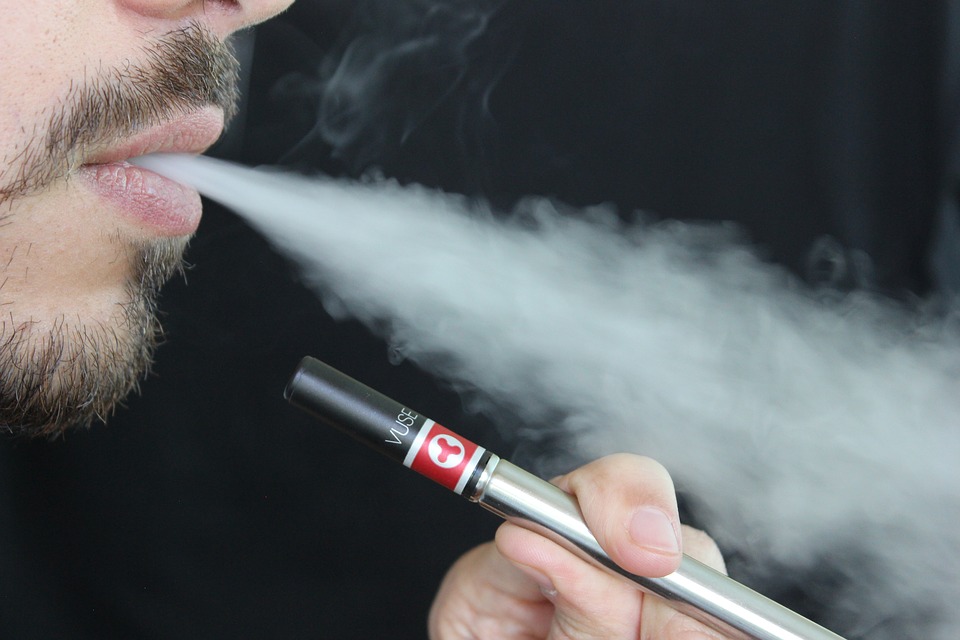Smoking cessation and even smoking reduction result in substantial health benefits. It is one of the leading preventable causes of death and is responsible for more than six million deaths worldwide.
Patients who reduce the number of cigarettes by 50% reduce their risks of getting cardiovascular diseases by 27%.
Currently, 21% of men and 15% of women in the united states smoke. Worldwide, the prevalence is, even more, reaching up to 50%.

Individuals with lower educational & income levels and a poor socioeconomic status have a higher prevalence. Furthermore, most men who smoke do not believe that smoking may be harmful to their health.
Why should you stop smoking?
Smoking is associated with a number of diseases. Most of the smoking-related deaths result as a consequence of atherosclerotic cardiovascular disease, lung cancer, and chronic obstructive pulmonary disease.

Smoking and lung cancer:
The association of cigarettes smoking with lung cancer was first suggested in 1912. In 1938, the first scientific report associated Cigarettes smoking with premature death.
The risk of developing lung cancer with “second-hand smoking” is far less common. However, since the duration of exposure to “second-hand smoking” may be longer than active cigarette smoking, the impact cannot be ignored.

Cigars and pipes smoking has also been associated with lung cancer, but the association is weak. Other factors like the number, frequency, depth, and degree of smoking affects the causality.
Smoking marijuana has not been associated with an increased risk of lung cancer but concomitant cigarette and marijuana use have been found to increase the risk of lung cancer by 10% compared to cigarette smoking alone.
Similarly, cocaine use has not been associated with an increased risk of lung cancer. Likewise, smoking from cooking & heating, and diesel smoking has not been clearly associated with lung cancer but factors like the duration and depth of exposure affect the overall results.

Smoking and cardiovascular risks:
The incidence of myocardial infarction is 6 times and 3 times more common men and women who smoke compared to non-smokers.
Smokers have an increased risk of dying from any of the cardiovascular cause including sudden cardiac deaths, heart failure, and cardiac arrhythmias.
Patients who smoke also have an increased risk of stent and graft stenosis after PCI and CABG respectively.

The association of cigar smoking with lung diseases like chronic pulmonary obstructive diseases well established. Its associations with cardiovascular diseases are not known yet.
Although cigars are thought to be less harmful than cigarettes, the same carcinogens and toxins are found in cigars.
Smoking four or more cigars per day is equivalent to smoking 10 or more cigarettes per day.
Smokeless tobacco (snuff) has not been associated with an increased risk of cardiovascular disease.
Smoking and other associated risks
- Smoking adversely affects your lipid profile. It is associated with an elevated LDL and TGL and low levels of HDL.
- Smoking increases the risks of developing blood clots owing to its prothrombotic properties, inhibition of tissue plasminogen activator, increased platelets and fibrinogen and hyperviscosity due to elevated hemoglobin.
- Smoking results in vasoconstriction and an increase in sympathetic activity resulting in an increase in the blood pressure.
- The risks of infections are higher in smokers. Infections commonly seen in smokers include TB, pneumonia, legionnaires disease, meningococcal disease, common cold, and influenza.
- Smoking has been associated with an increased risk of diabetes.
- Cigarette Smoking accelerates bone loss, decreases bone mineral density, and increases the risks of bone fractures.
- Smoking during pregnancy has been associated with an increased risk of complications that include spontaneous abortions, ectopic pregnancy, preterm births, low birth weight. It also affects sexual health and has been associated with premature menopause, erectile dysfunction, and subfertility.
- Smokers are more at risk of developing peptic ulcer disease. Furthermore, it is also associated with H.Pylori infections that predisposes the person to develop peptic ulcers.
- Smoking increases the risks of gingivitis and periodontitis
- It may also impair wound healing in post-operative patients

- Smoking adversely affects your lipid profile. It is associated with an elevated LDL and TGL and low levels of HDL.
How to Quit smoking?
Decide and set a QUIT DATE. This may be two weeks or more but should not exceed 6 weeks as the enthusiasm may fade away and the decision to quit may weaken.
During this time switch to low nicotine cigarettes. Tell your family members and well-wishers about your plan (Do not involve the friend who smokes).
Anticipate nicotine withdrawal symptoms and prepare to tackle those. Involve your healthcare provider (if you trust him) and discuss medical and behavioral therapies with him.
Withdrawal symptoms and signs with smoking cessation:
Individuals must be prepared to experience one or more of the following Nicotine withdrawal symptoms:
- Increased appetite or weight gain
- Dysphoric or depressed mood
- Insomnia
- Irritability, frustration, or anger
- Anxiety
- Difficulty concentrating
- Restlessness
- Cough and mouth ulcers
Behavioral therapies for smoking cessation may include:
- Starting an exercise program or other relaxation techniques. This may also help in maintaining weight.
- Minimize time with smokers, rather avoid them. If they can not be avoided, request them not to smoke in the car or at home where you spend most of your time.
- Minimize withdrawal symptoms by chewing sugarless gums, carrots, and sunflower seeds, etc.
- Get support from your counselor or a family member especially during withdrawal symptoms.
- If previous attempts at the above non.medical techniques have failed, certain medications may be used.

Medications used as an aid for smoking cessation:
Nicotine replacement therapy:
- These are especially helpful in patients who develop intolerant withdrawal symptoms and nicotine craving.
- Using concomitant smoking and nicotine replacement is not recommended.
- Nicotine is available as gum or lozenge, patch, nasal spray, or inhaler
e-Cigarettes:

- e-cigs are less harmful than cigarettes. (BUT HARMFUL).
- They have been used to reduce cigarettes cravings and as an aid to quit smoking.
- Although e-cigarettes are not FDA approved, studies are still being conducted to find their effectiveness in smoking cessation.
- A recent study published in the NEJM (New England journal of medicine) compared the efficacy of e-cigs with nicotine replacement as an aid to smoking cessation.
- The study concluded that after one year of intervention, the abstinence rate was 18% in the e-cigarettes group vs 9% in the nicotine replacement group.
Varenicline (Chantix):
- Varenicline (Chantix) is not available as OTC medicine. It reduces nicotine withdrawal symptoms and symptoms of cigarettes cravings and is more effective than the other currently available medicines like bupropion. It is recommended to be taken as follows:
- It should be taken after eating with a full glass of water as follows:
- 0.5 mg tablet daily for three days
- 0.5 mg tablet twice daily for the next four days
- 1.0 mg tablet twice daily starting at day seven
- It should be initiated one week after smoking cessation and continued for at least 12 weeks that may be extended for another 12 weeks.
Bupropion (Wellbutrin):
- Bupropion (Wellbutrin) is primarily an antidepressant medicine used in smoking cessation.
- It is usually taken once a day for three days, then increased to twice a day starting two weeks before the quit date and continued for 7 – 12 weeks.
- Bupropion may be more effective than nicotine replacement therapy, and combining the two may be even more effective.
- Bupropion may result in dry mouth and difficulty sleeping. It is not recommended for those who have a seizure disorder, head trauma, anorexia nervosa, or bulimia, and those who drink excessive alcohol.
- Patients with a past history of behavioral problems and seizures should avoid bupropion.
In conclusion:
Smoking is a serious public health issue and is the leading preventable cause of death especially from lung and cardiovascular causes.
Smoking cessation includes strong determination, behavioral therapies, and medical therapies.
